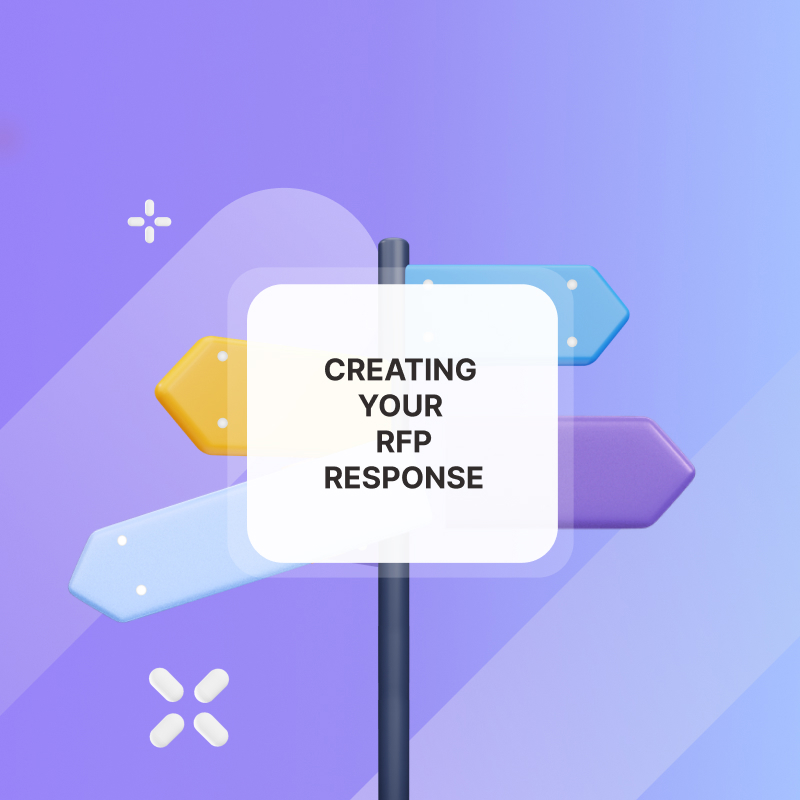
In The Jedi Path Part I, we told you a story of how Hubforce started. We introduced the main characters and set the scene for the events that would unfold next.
In Part II, we’re talking about conflict and resolution – or what we did wrong that we’re trying to do differently now. And we’re introducing the key pillars that Hubforce is built upon, from its very beginning.
Chapter Three. Learning from mistakes
How can you avoid mistakes? By doing nothing.
Of course, some mistakes can be learned from the experience of others. But really, who does that? You have to take your lumps before finding a better way of doing things, especially in business.
For us, building Hubforce after having grown My Learning Hub means that we can leverage the big takeaways and apply them to practice right from the start.
A pain point made personal
With a long sales cycle, enterprise-level rapport-building process and high-touch onboarding, sometimes a client would take six months or longer to go live at My Learning Hub. And although e-learning software might not be as complicated, the client’s internal processes, decision-making politics and a list of features to tick off for compliance might get in the way.
When we engage with a prospect for the first time, we would educate them through the materials showcasing the product and help them build a business case internally. And then, we often would be left in the dark – not knowing who opened it, who else looked at it, how it was shared internally, and what were their main concerns or “blockers”. We would follow up to find out this information from our point of contact and move the deal forward but it takes time, mutual engagement and consistency.
How can we streamline this process and make it easier for ourselves?
We started thinking. What if we have a digital sales room that:
- would contain all relevant materials for the client to access and review, without them getting lost in endless email threads and heavy attachments;
- anyone on the client-facing teams could build in minutes into a user-friendly, intuitive interface;
- and would provide the vendor with a transparent journey of what’s happening on the client side?
Surely, we’re not the ones struggling! Something must exist already.
Yes, products are emerging in this space. But they rarely combine all three elements: (1) a centralised content hub, (2) easy for non-designers to design, (3) that offers actionable insights from its backstage data.
Hubforce does exactly what we needed. It is a solution to the problem that we know inside out ourselves.
Born in crisis, built to last
Although we deeply believe that learning is everywhere, Learning & Development as an enterprise function is among the first to get downsized during a recession. Learning & Development often remains in silo from other departments or company-wide initiatives, putting learning management systems as a proposition to rely solely on e-learning admins and training managers.
With Hubforce and our focus on sales, we cannot escape the concerning signs and consequences of the current economic downturn, but we can build for it.
Like a boat sailing through a storm, we have to get rid of everything that can potentially sink it. In product development, design and sales, we are building Hubforce in a lean, organically scalable way. This includes:
- optimised internal processes;
- small team + ownership + trust = big output;
- built-in network effects;
- community-first marketing;
- sales academy and affiliate programme;
- and other fundamentals that we’ll tell more about in the next blogs.
The key here is to think strategically about what we can do now – for ourselves and our clients – to grow sustainably, and with minimum costs, in the future.
Thinking bottom up first
As you can probably tell from our experience, focusing on upmarket enterprise clients worked for My Learning Hub, especially in more traditional industries like manufacturing, hospitality and finance, but it also gave us an idea for Hubforce. Long sales cycles are no fun – and we’re coming for ya!
Generally, apart from big contracts and long licenses, a top-down approach in software means:
- finding the right person at the right seniority level to gauge initial interest;
- a lot of stakeholders and decision-makers to educate and build internal rapport with;
- that sometimes your main point of contact can change jobs or leave the company and you have to start building a relationship with the new person in charge from ground zero;
- and, of course, a lot of custom development work, draining your team's resources.
With Hubforce, we develop our software offering from the bottom up. Inspired by the likes of Dropbox, Slack and Trello, we want salespeople to start using our product without any commitment to see the first results.
They can then invite their colleagues, reaping more benefits from collective input and a built-in referral scheme, which gives them professional leverage and improve the bottom line of their business.
Pulling back the curtain
Finally, what we didn’t do well at My Learning Hub is telling a wider world about what’s happening behind the scenes. We started talking more about our team members on social media, particularly LinkedIn and Instagram, but we didn’t do it consistently.
So this is the first blog post where we are actually telling our story.
Not documenting what we have previously gone through and the changes we applied to our work processes doesn’t seem like a big problem until you start doing the opposite. Reflection is great, my friends, and not only in therapy.
Our promise from now on is to share more and commit to it, whether it’s a takeaway of our recent experience or a live recording of what we experiment with.
Bonus Chapter. Secret sauce
The secret sauce of this business-building formula – and the glue to all its components – is, of course, our people. We’ve inevitably had some bad hires but the good ones share a lot in common.
1. Attitude over aptitude
Yes, hard skills are important, especially in a small startup team, but attitude is a massive dealbreaker for us. We all want to learn and put our best into building great products. We do not shy away from taking on difficult tasks that we haven’t done previously – and growing into a new role as a result of it.
We have a few success stories like this. For example, Nadiia grew into a product manager from QA, having proven her organisational and leadership skills in the development team. Vlad who first started as a graphic designer has established himself in a new role in motion design, building out a JSON library that’s now integral to our products.
2. Desire for different hats
As a relatively young and small company, we do not have an HR or Operational Manager. Although we consult with external advisors on topics we are not yet experienced in, our team members give us the best advice in terms of how we can improve things – trying on a new hat, different from their primary roles and responsibilities.
If someone wants to get our time-off policy sorted, add new software to the stack or update our development sprints, they can take initiative and implement the changes that the team would benefit from as a whole.
Shout out to Oxana, our customer success manager, who has become the queen of formula-infused Notion tables that now cover not only client onboarding but also some of our internal processes.
3. Duty of candour
Productive work is expected from everyone, but never at the expense of mental well-being or personal life. There is a lot of implied pressure and stress around the concept of “working in a tech startup” but we don’t think it should always be like this.
If someone on the team who’s feeling unwell, going through a life change or willing to try something new, voices their concerns and troubles, they would always get support in finding a way out together.
Even when it’s inconvenient or untimely, honesty leads to awareness and potential solutions. So we encourage everyone to bring the duty of candour in their work life to be able to do their best, where “best” can be defined differently at a given period of their lives, and feel valued as the person they are.
You can join our sales team and send us your application at [email protected].
Key takeaways
The story of how Hubforce started resembles the path of a true Jedi – or at least, this is what we’d like to think of it.
So in the Jedi speak, let us summarise the key lessons that we have learned from it:
- Your focus determines your reality.
- Do or do not. There is no try.
- A little more knowledge lights our way.
- I am one with the Force and the Force is with me.
Or in business-building speak, our success components come down to perseverance, speed of implementation, learning from mistakes, and the secret sauce that is our team.
Wish us good luck in keeping the promise of sharing our further journey – and sign up for our beta waitlist if you’re interested in early access to Hubforce.


















